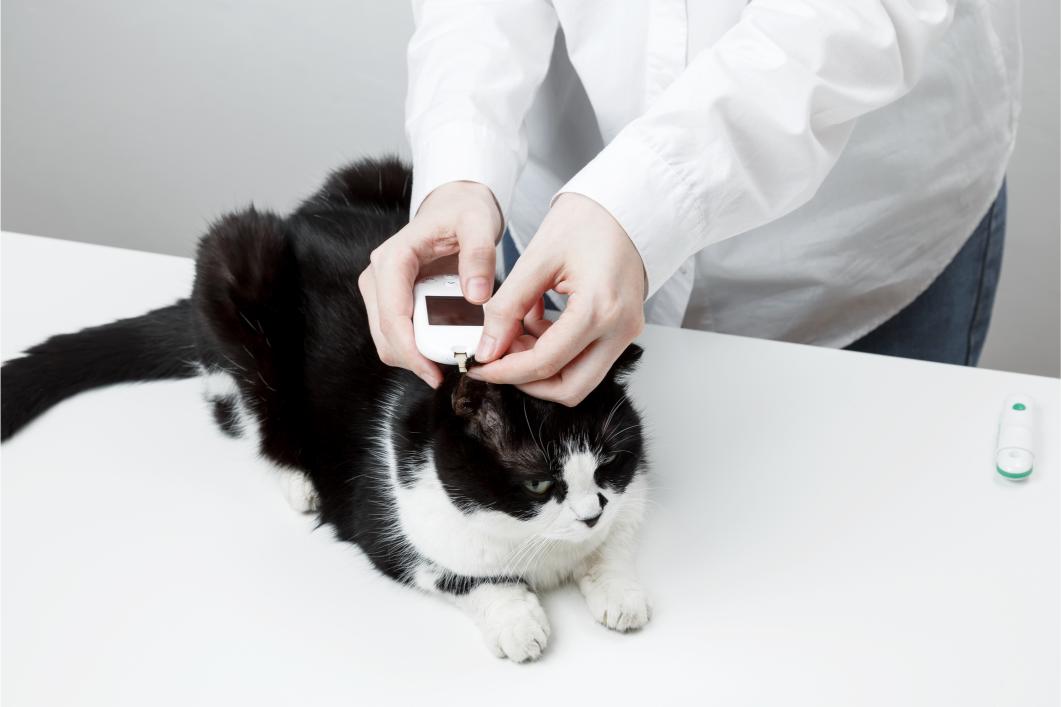Blog
November is National Pet Diabetes Month

This November, the team at 10 West Bird & Animal Hospital wants to spotlight National Pet Diabetes Month. Dogs and cats are the most commonly diagnosed with the disease, but birds—including backyard chickens and ducks—can get it, too.
Knowing what symptoms to look for is key to making sure your pet has the best chance of a healthy and happy life.
Key Warning Signs of Diabetes Across Pet Species
Many pet species share a few key symptoms of diabetes. Keep a close eye on:
- Excessive thirst. Dogs and cats with high blood glucose will drink more water than normal and, as a result, will urinate more frequently. Diabetic birds can also experience increased thirst—your backyard flock might empty their waterers faster than you expect them to.
- Weight loss. Despite eating normally—or even eating more than usual—diabetic pets often lose muscle and fat. This is because they aren’t able to use insulin effectively, and therefore can’t properly use glucose for energy.
- Cloudy eyes. Cataracts are a common complication of diabetes in dogs. They can develop quickly as high glucose levels change the lens of the eye. While cataracts aren’t as common in cats or birds, any sudden changes in vision are worth noting.
- Poor coat condition. Complications from diabetes can negatively affect your pet’s coat, whether it’s made of fur or feathers. Birds and chickens with diabetes might start overpreening, losing feathers, or experience a slow regrowth of lost feathers. A dull, brittle, or greasy coat in cats and dogs is a red flag too.
If your pet shows any of these signs of potential diabetes, schedule a visit with your veterinarian as soon as possible.
Why Early Detection Matters
Without diagnosis and treatment, diabetes can get serious very quickly. Dogs and cats can suffer from nerve damage, urinary tract infections (UTIs), and diabetic ketoacidosis—a life-threatening emergency—if diabetes goes untreated.
For birds, living with high glucose for long periods of time can put a strain on the kidneys and lead to painful skin and feather conditions.
The earlier your veterinary team can diagnose diabetes, the sooner your pet can get treated. For dogs and cats, treatment often involves insulin and dietary management. For birds, diet changes can go a long way in stabilizing blood sugar and reducing complications.
What Pet Parents Can Do
Knowing the most common signs of diabetes is an excellent first step to proactively preventing any diabetes complications.
Here’s what you can do:
- Watch out for any excessive thirst, weight loss, cloudy eyes, or poor coat condition
- Schedule routine exams with blood and urine testing for dogs and cats, and health checks for birds
- Take notes on any unusual symptoms—such as appetite, grooming, or water use habits—and share them with your veterinarian
The friendly team at 10 West Bird & Animal Hospital is here to help with both preventive care and diabetes treatment. Give us a call at (210) 696-1700 to schedule an appointment for your bird, dog, cat, or exotic pet today.
